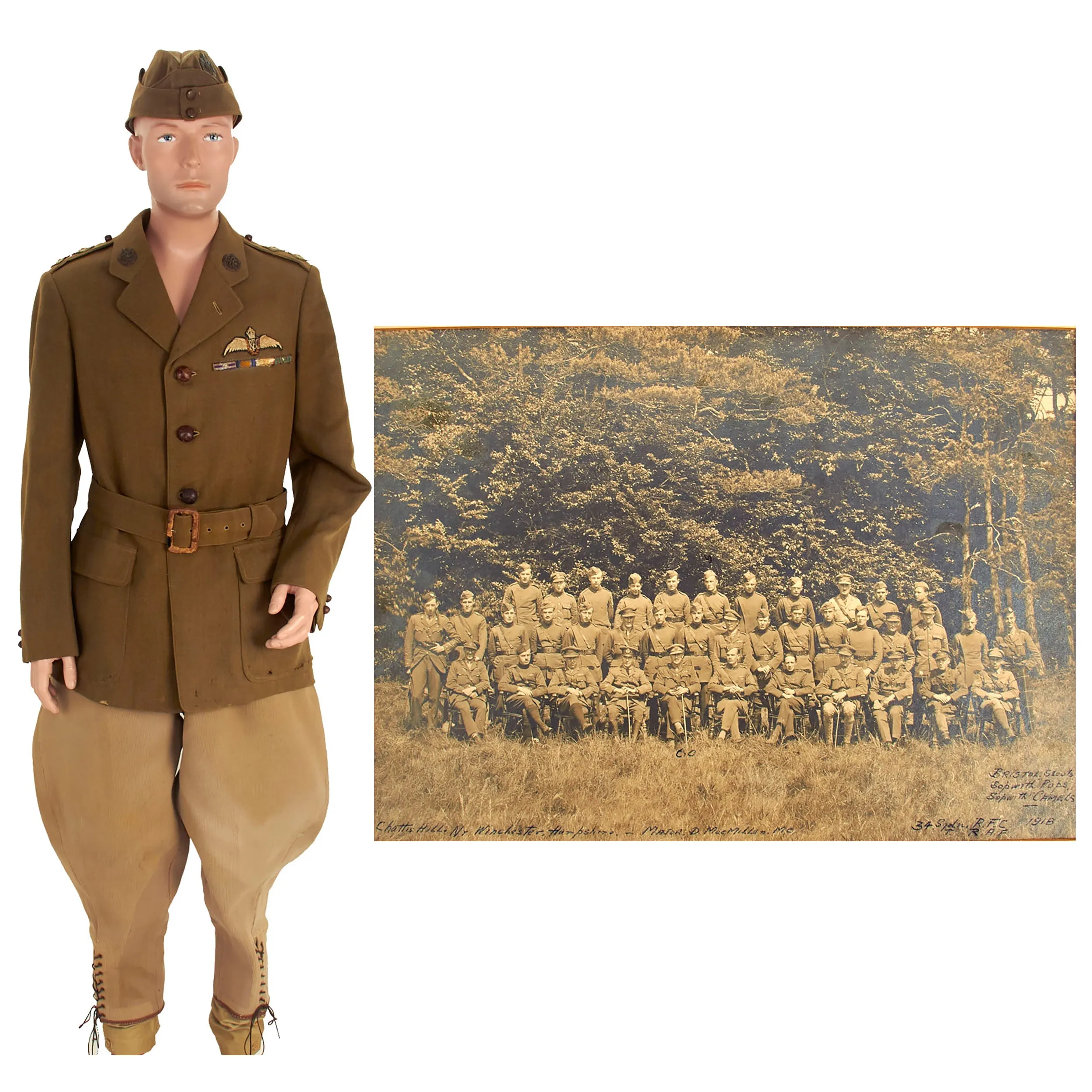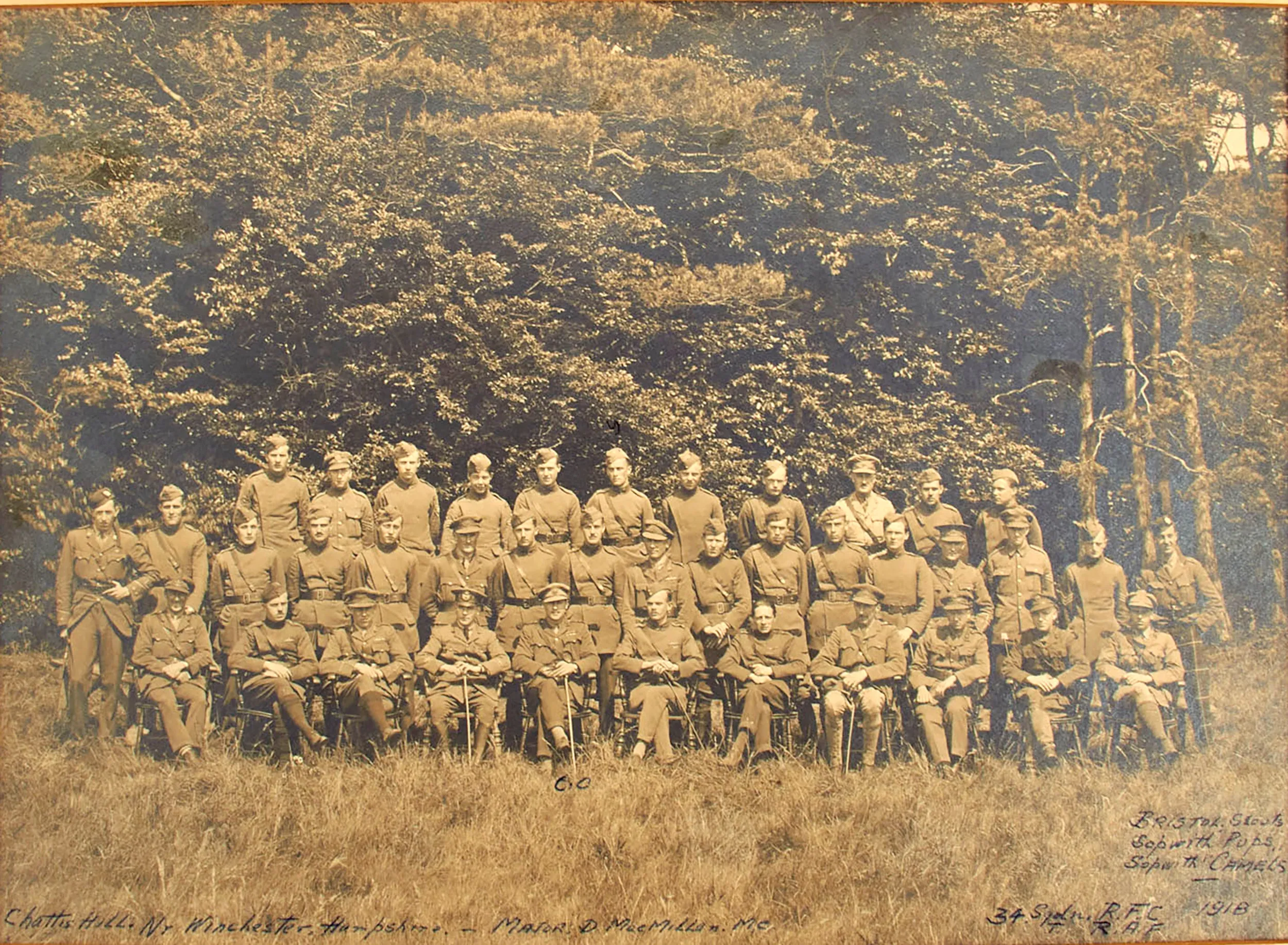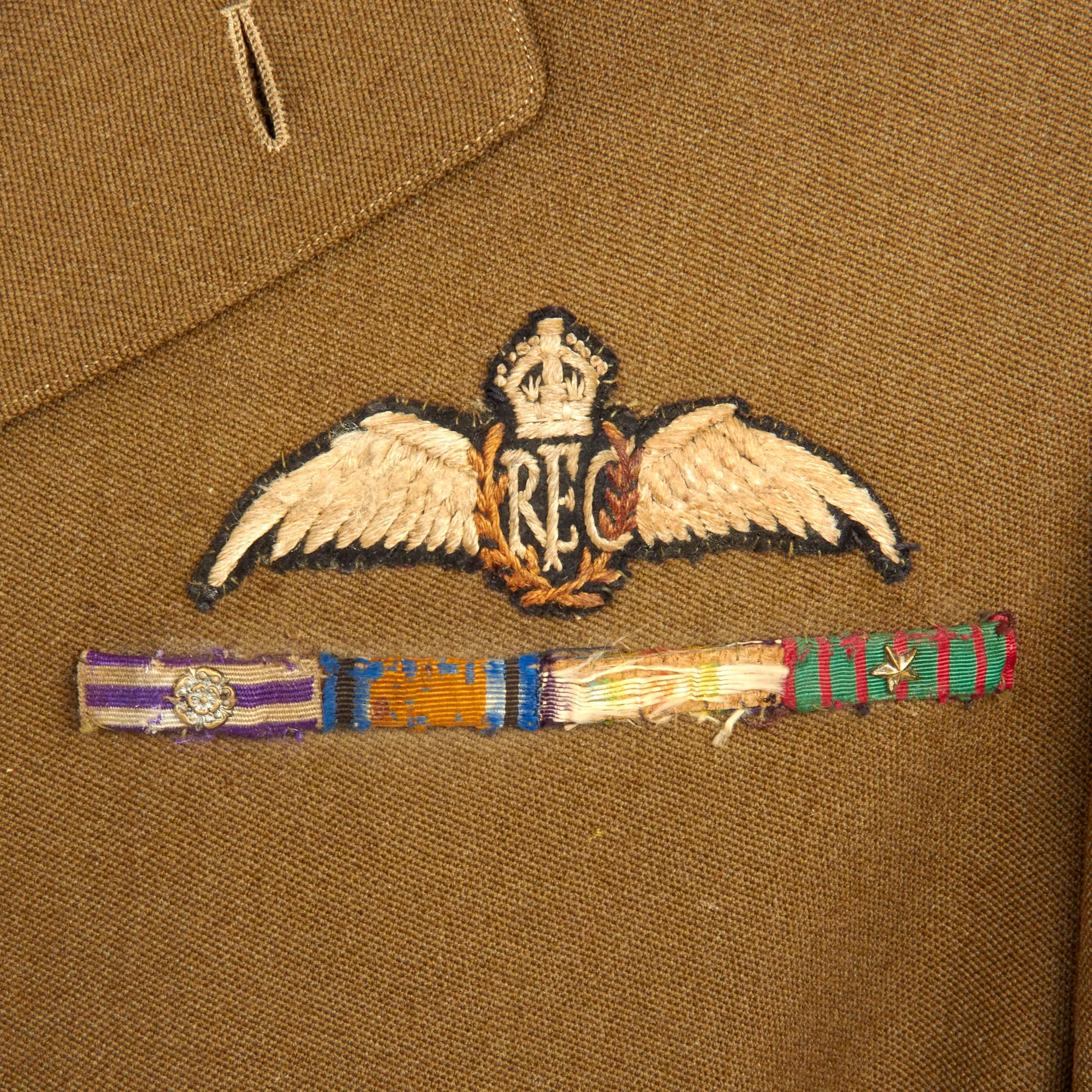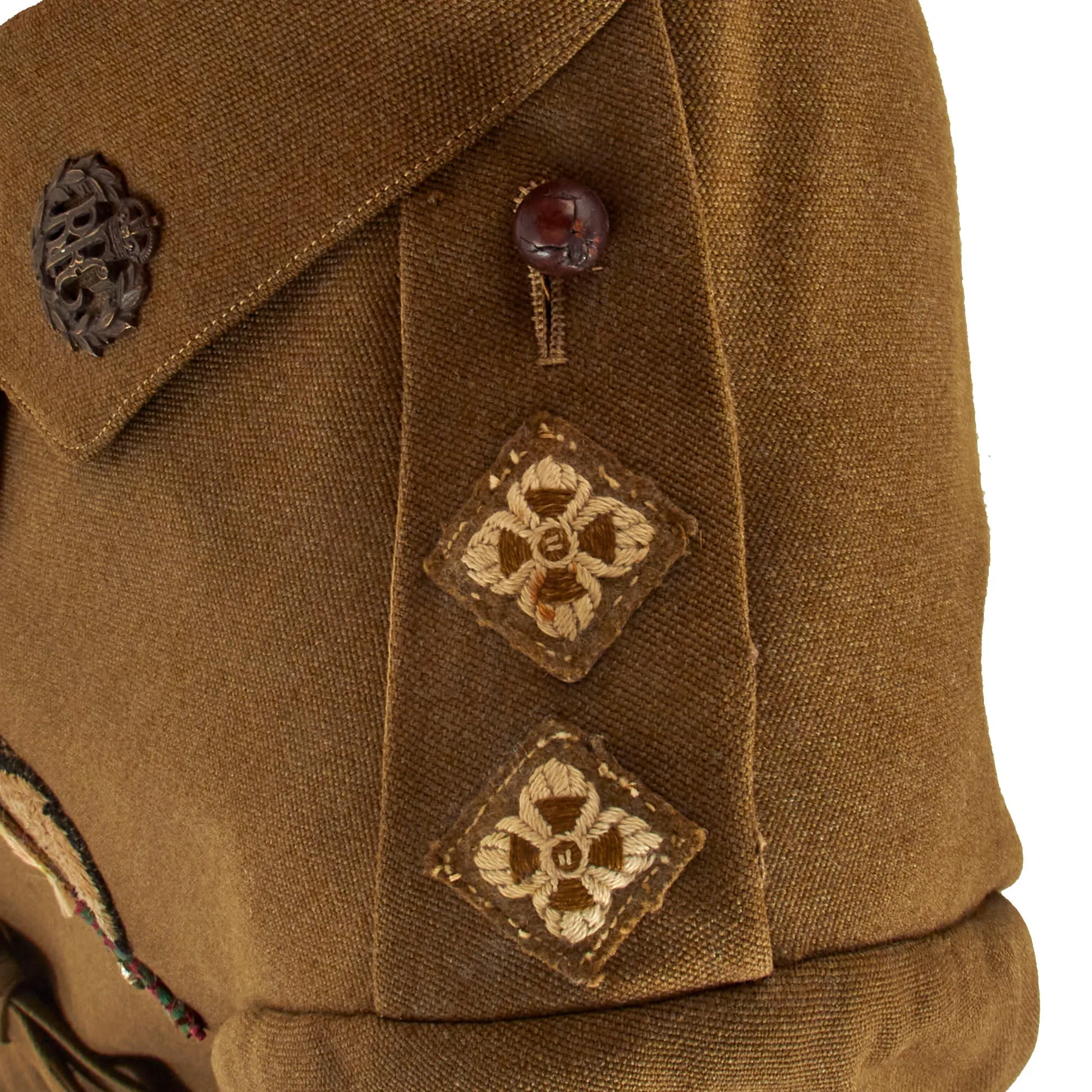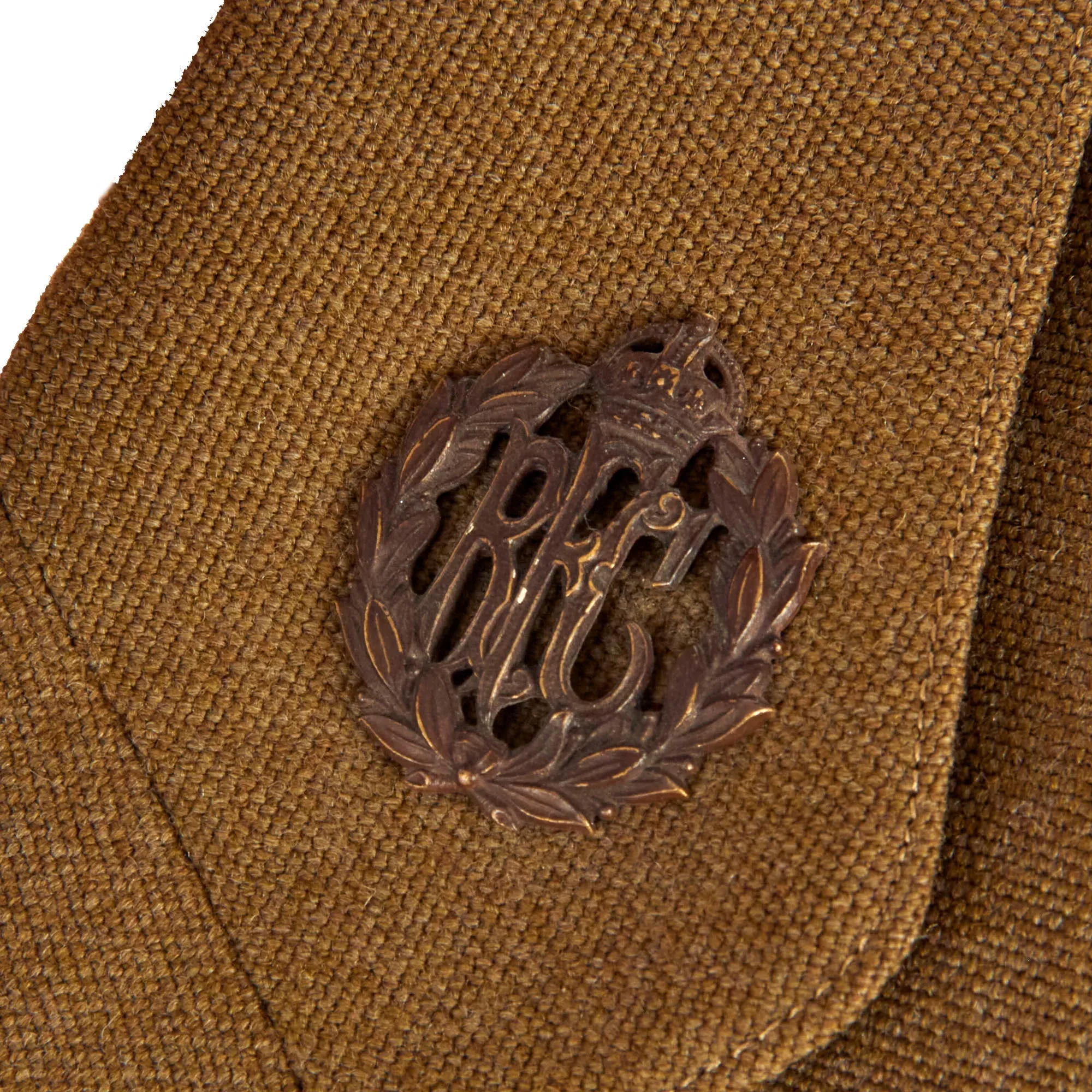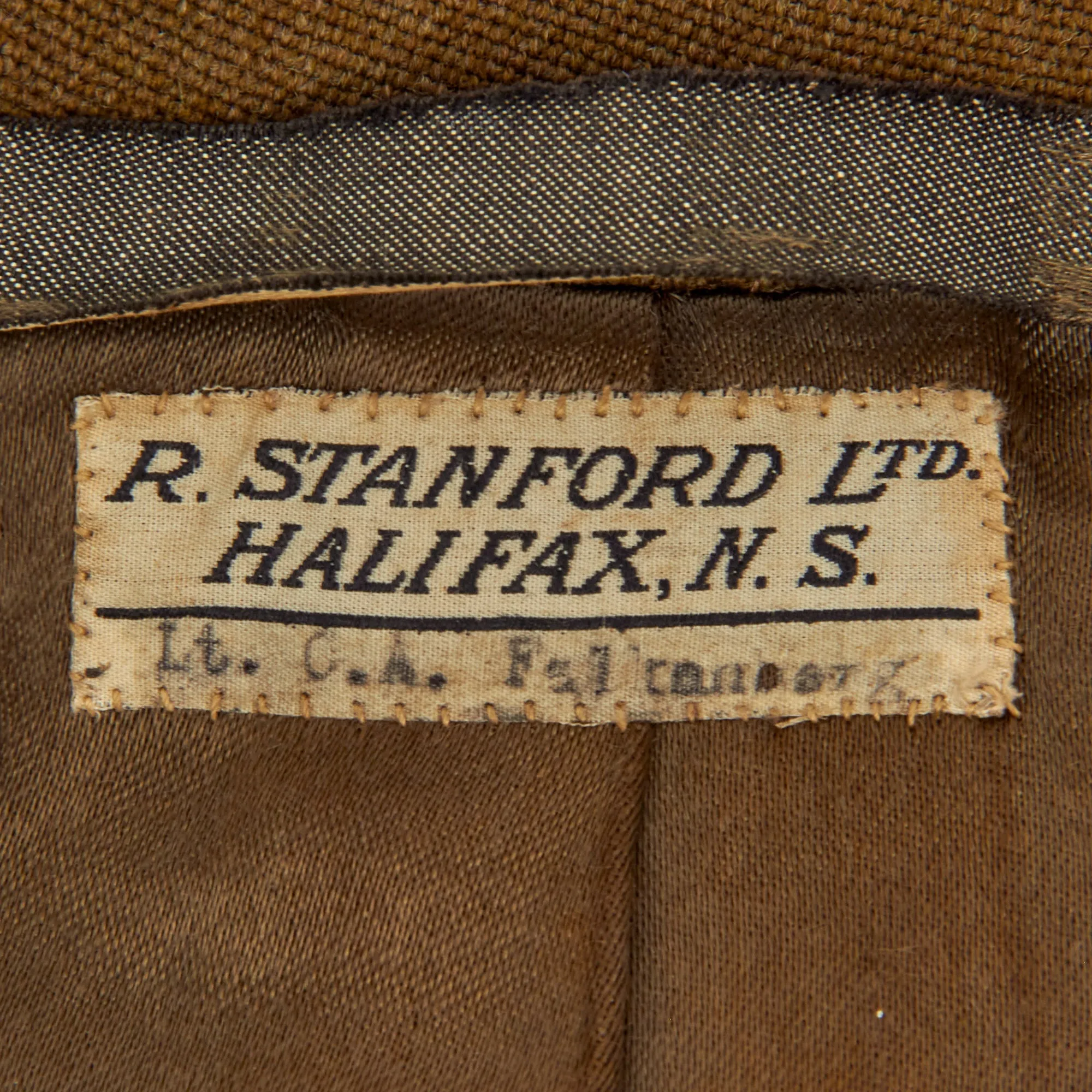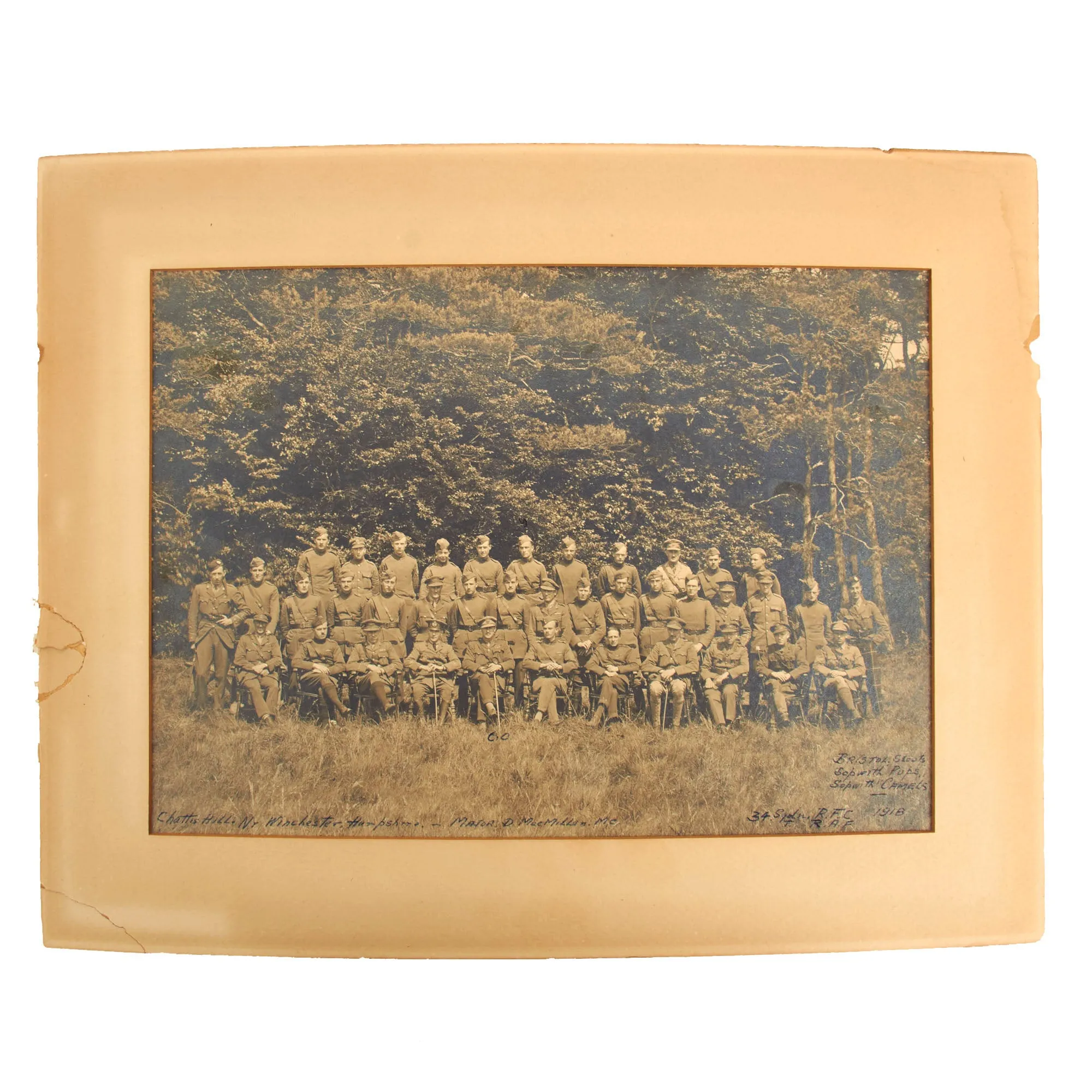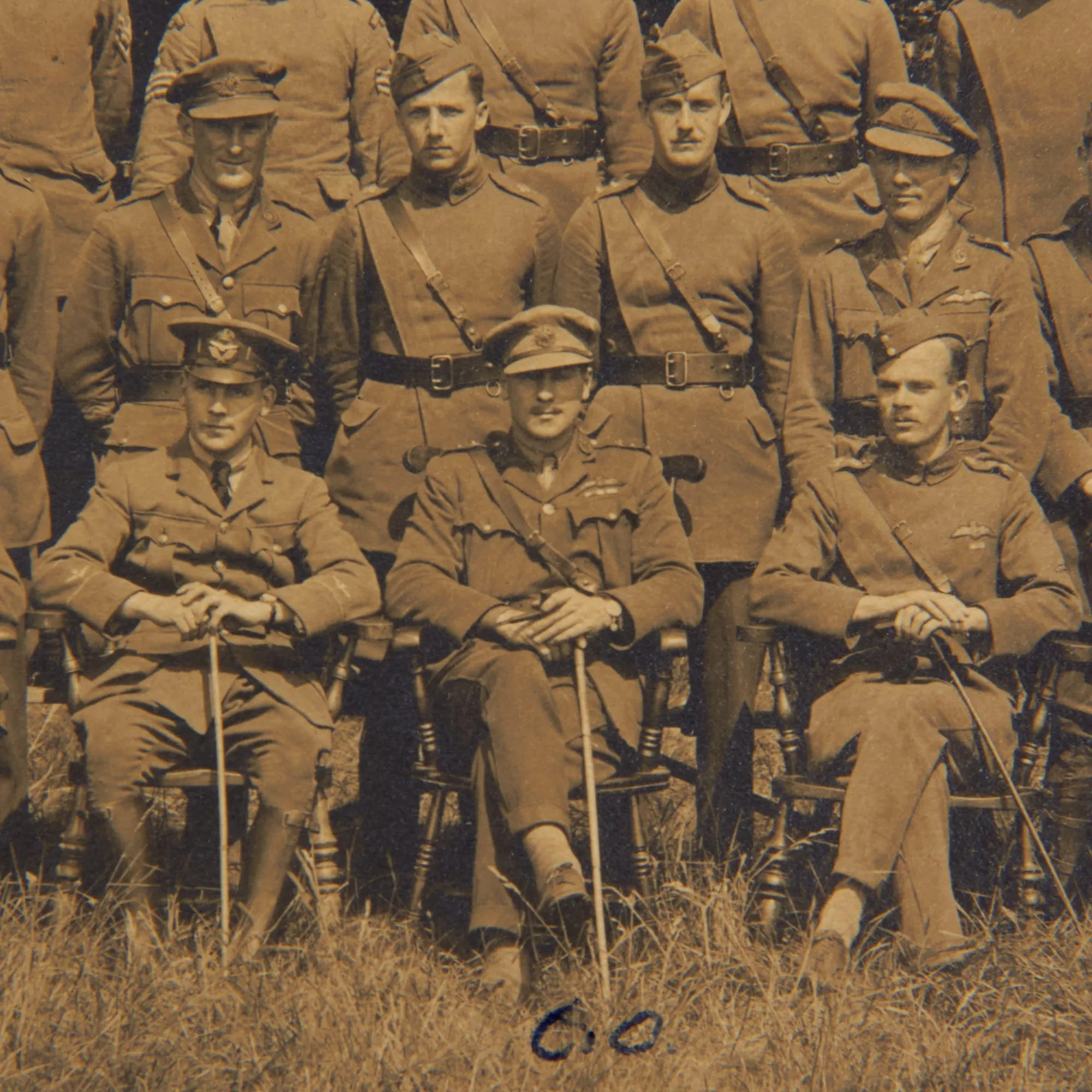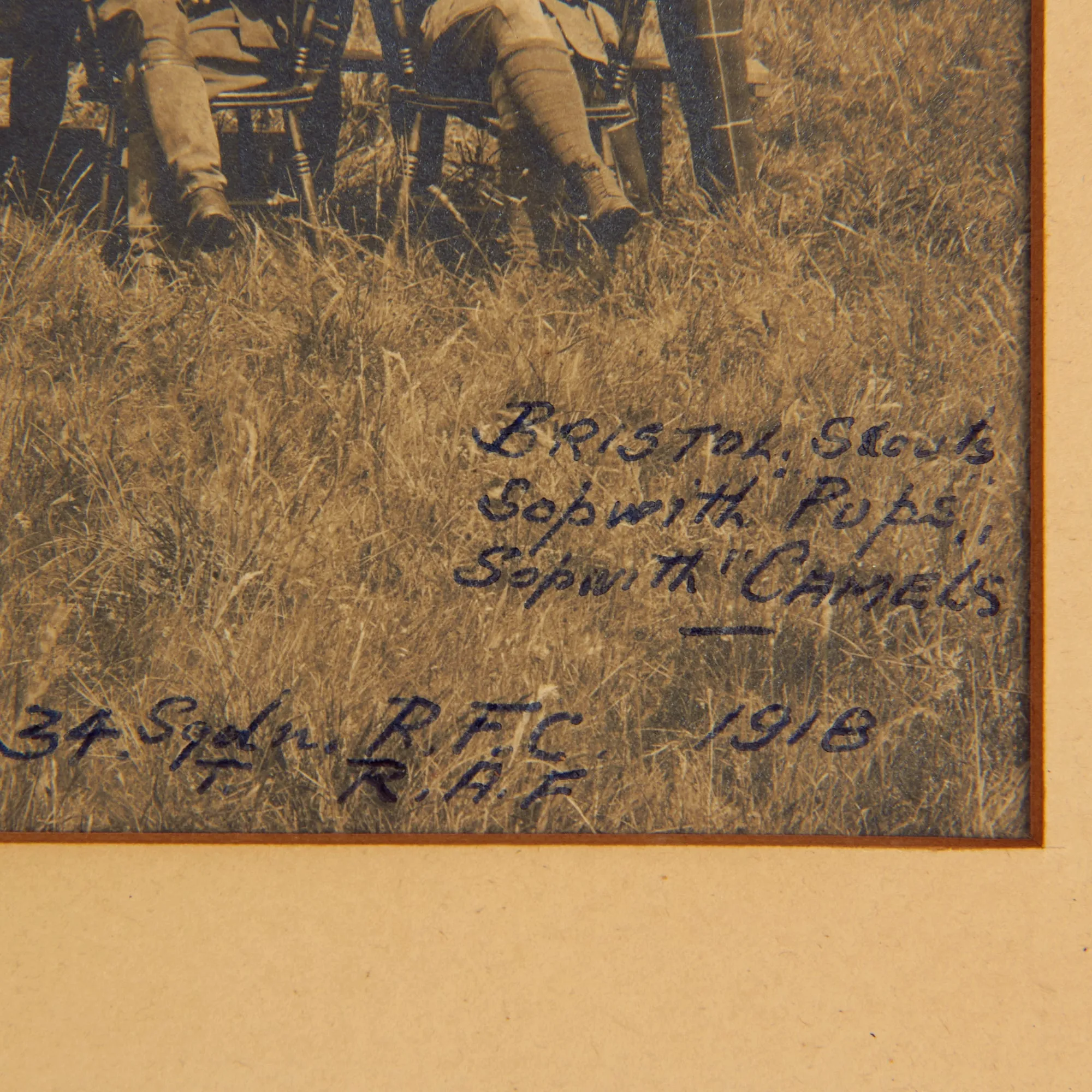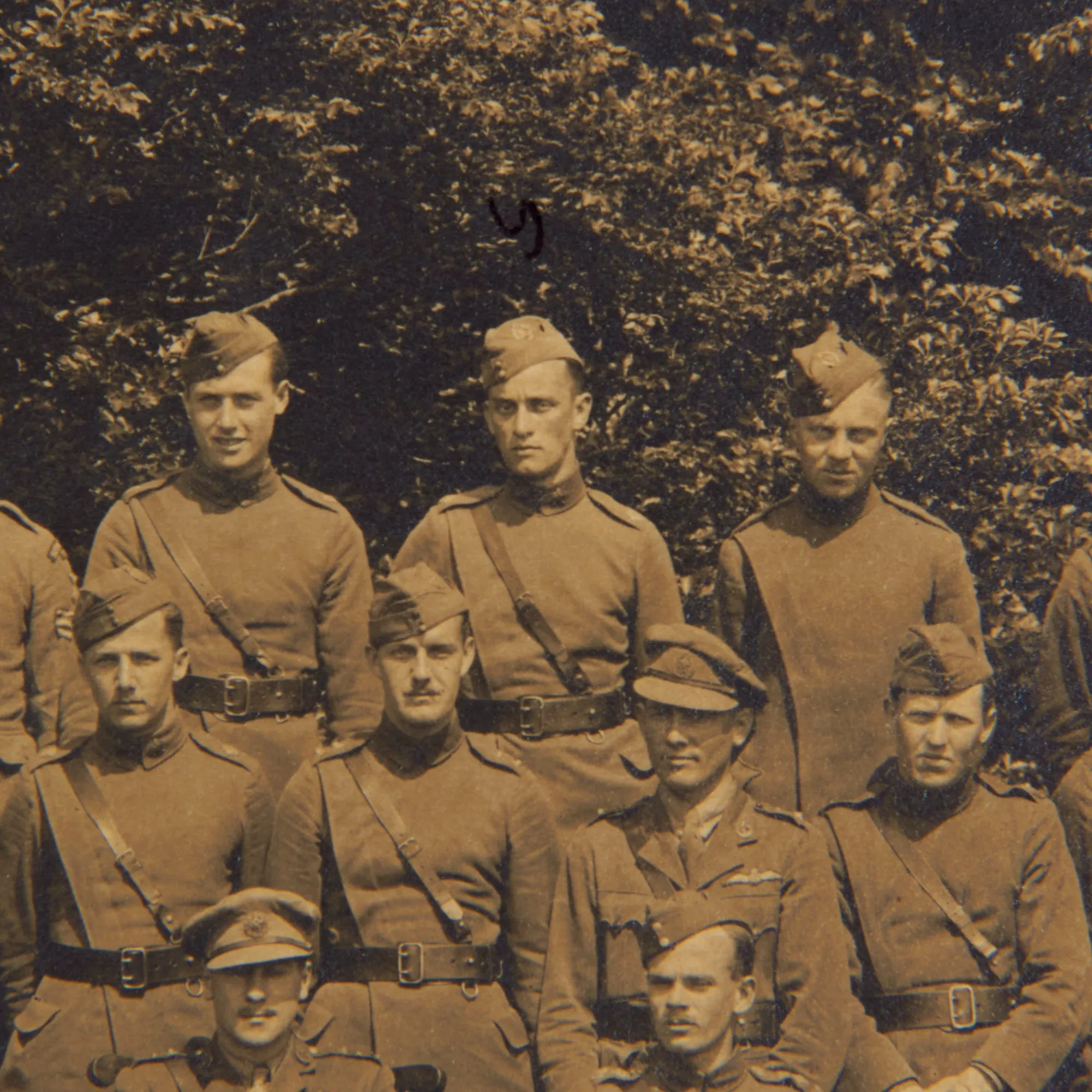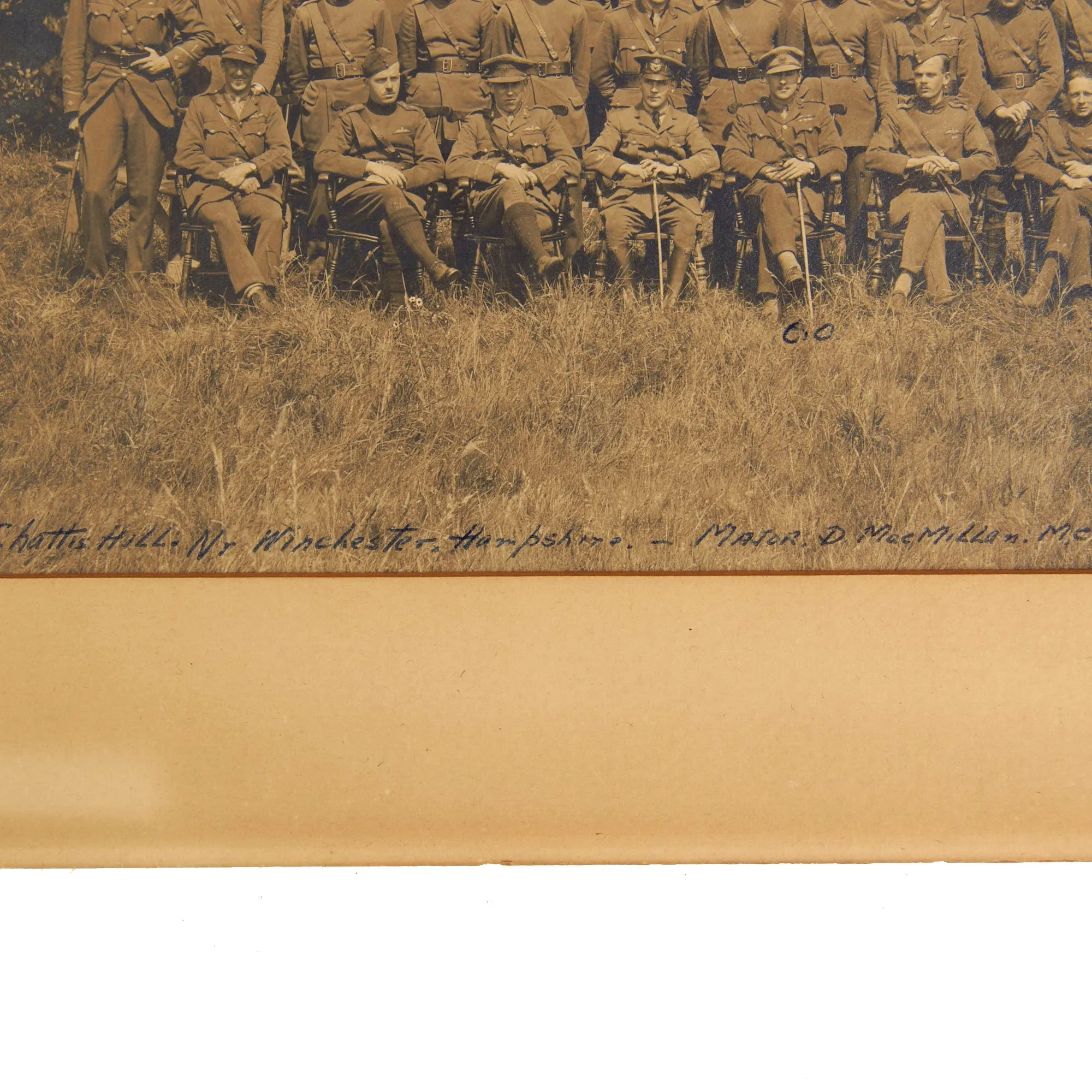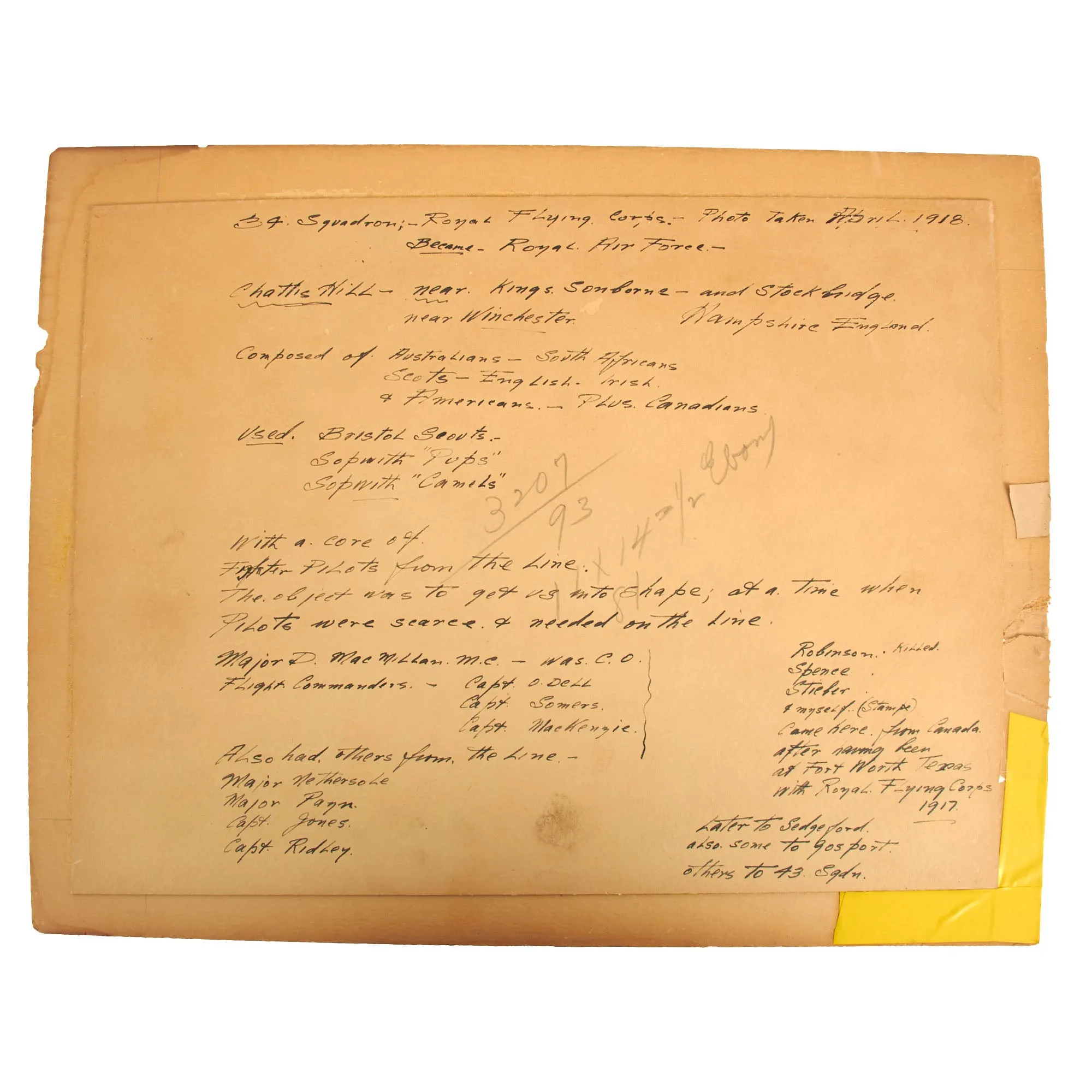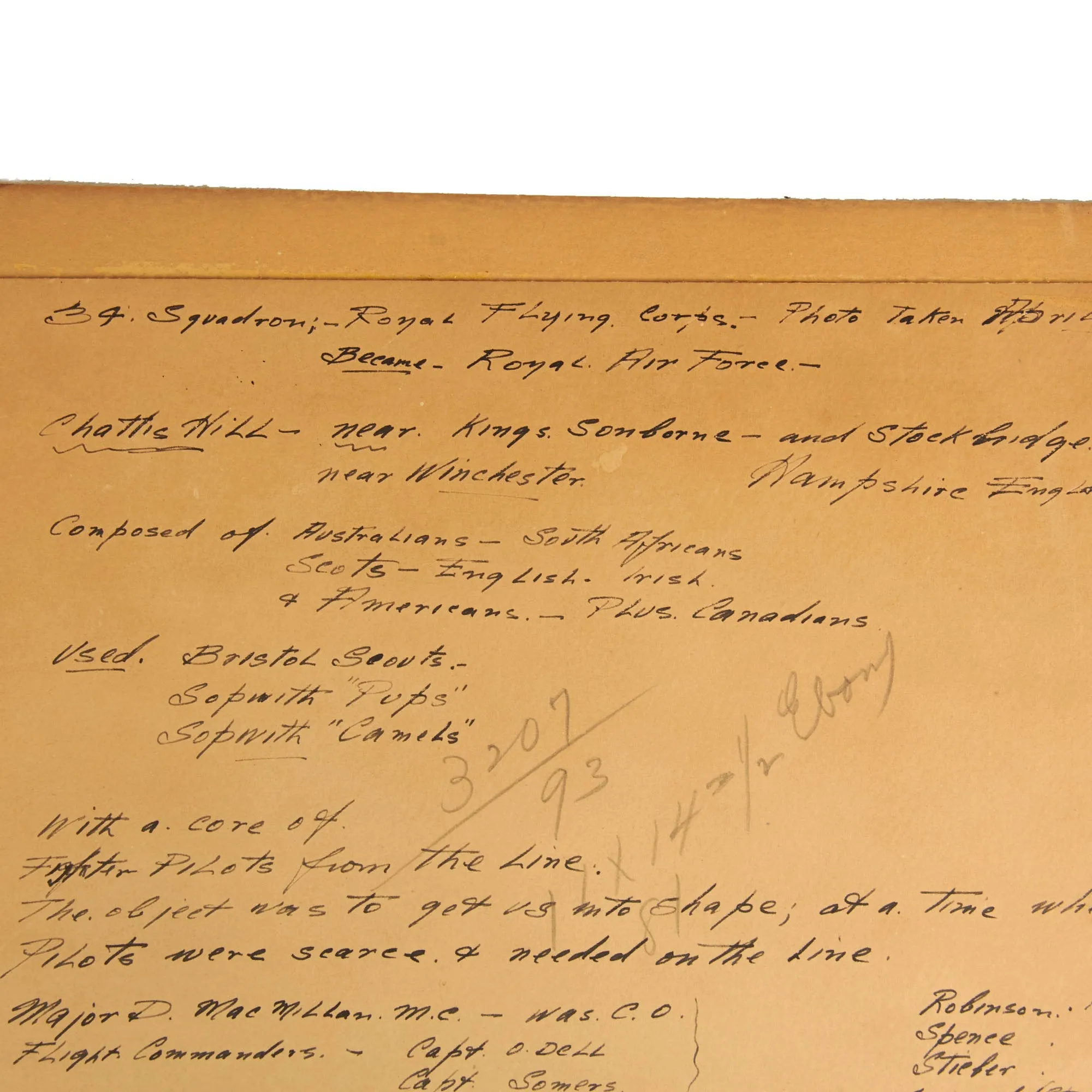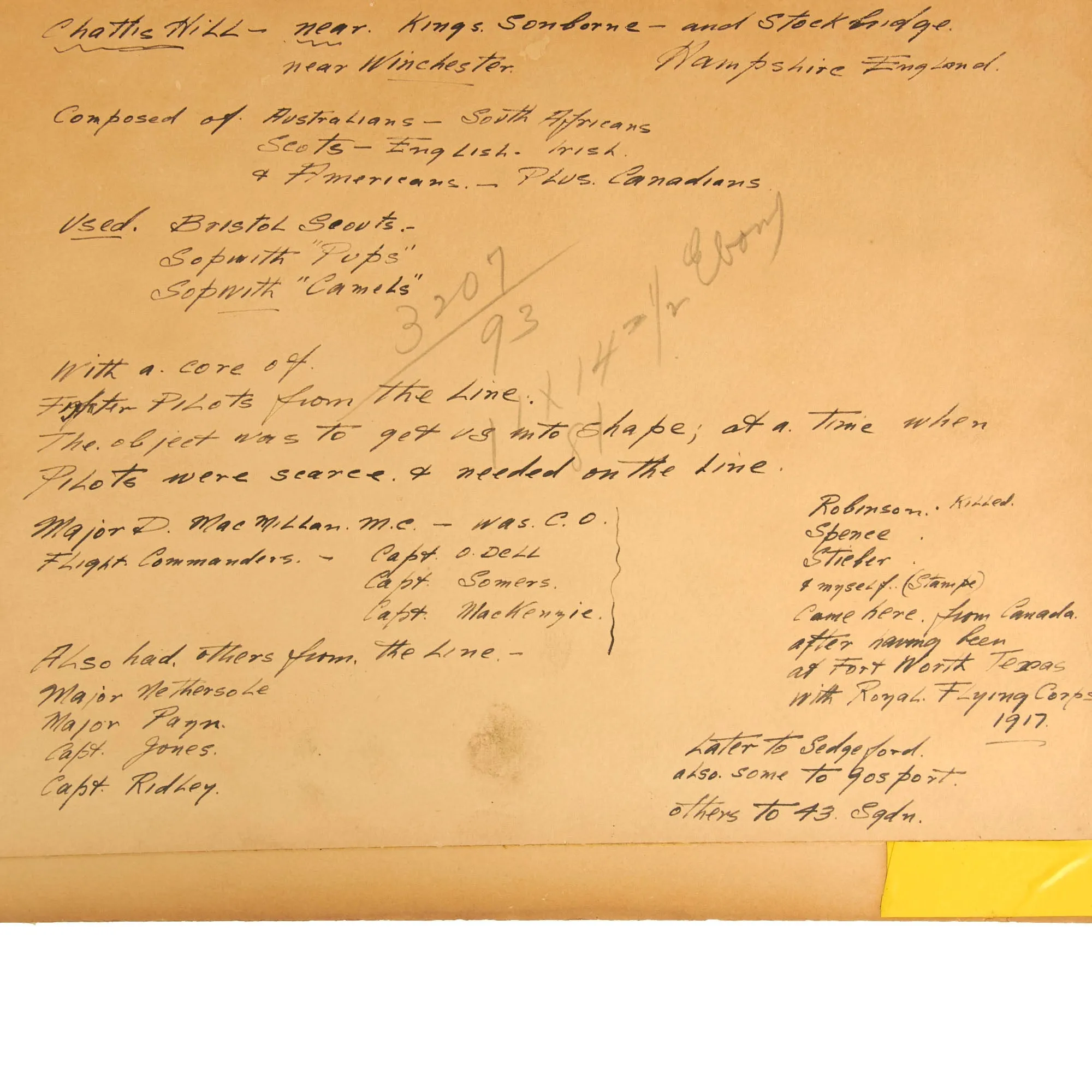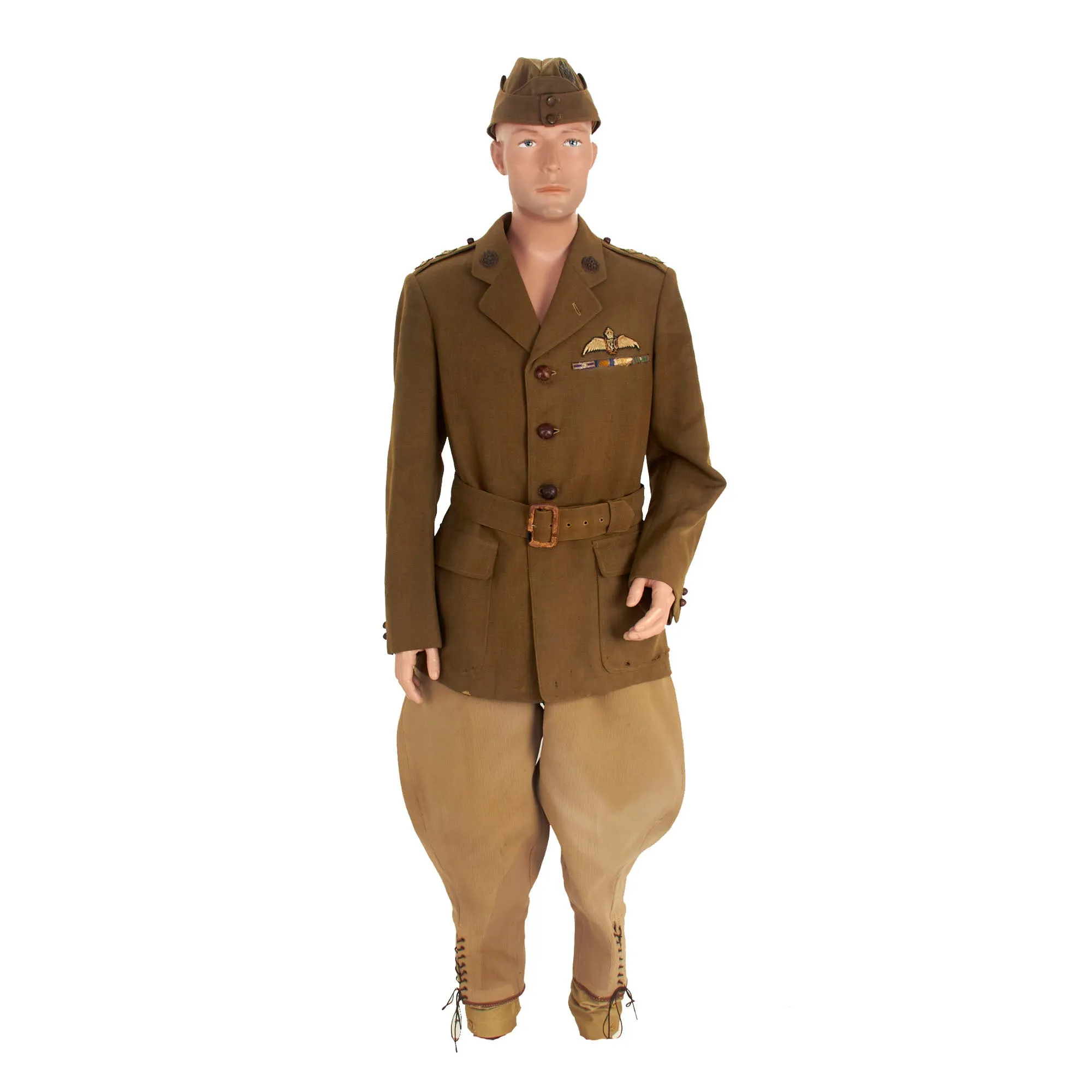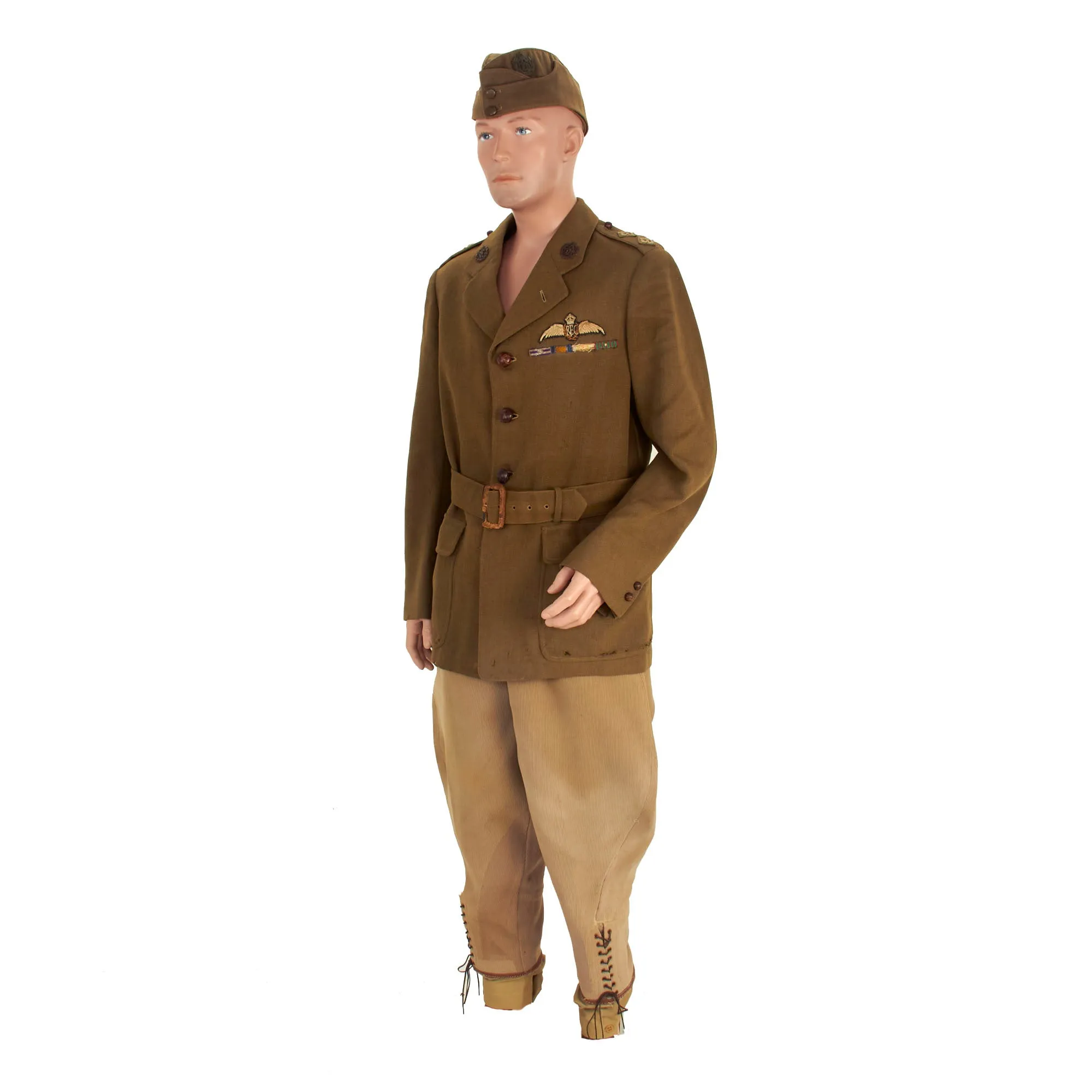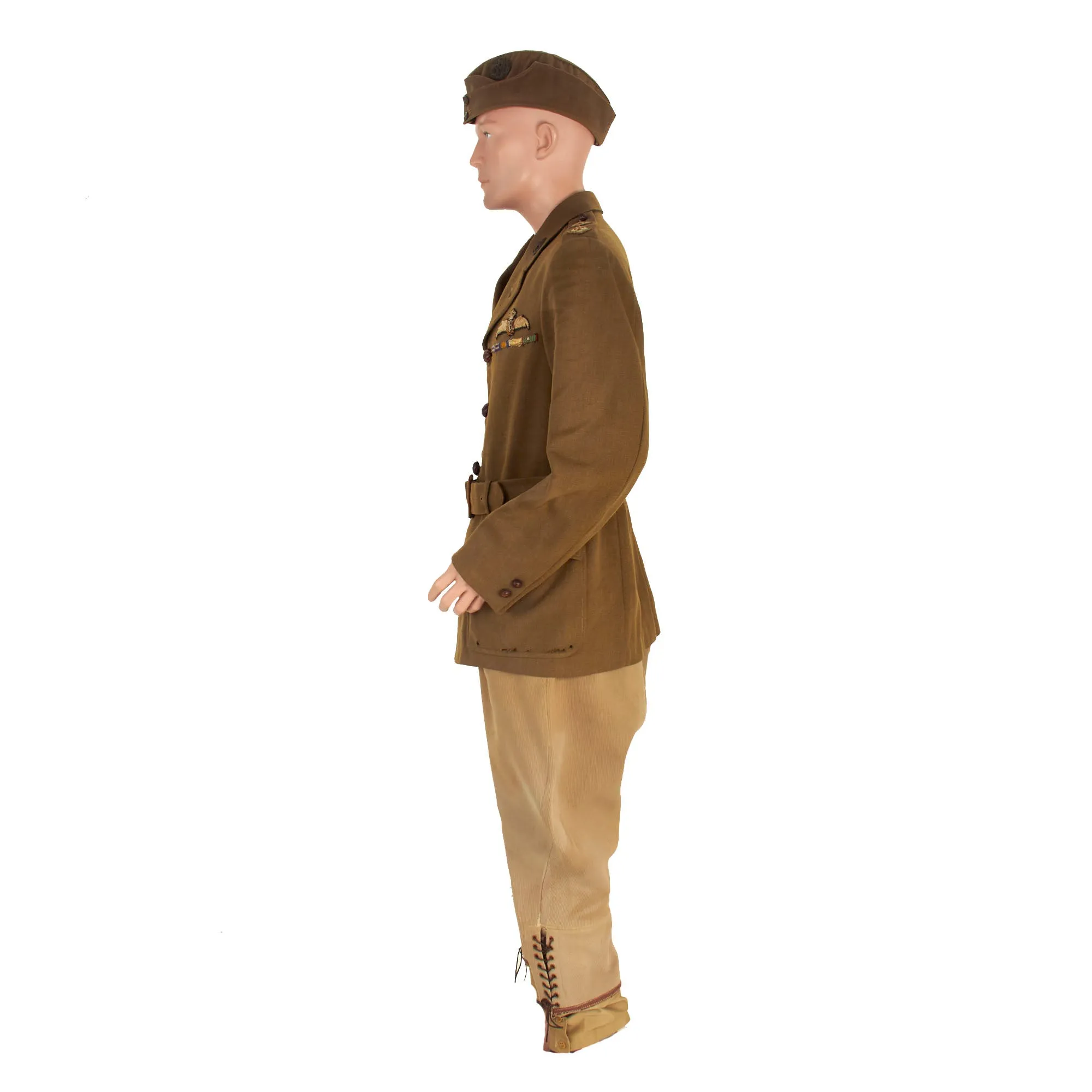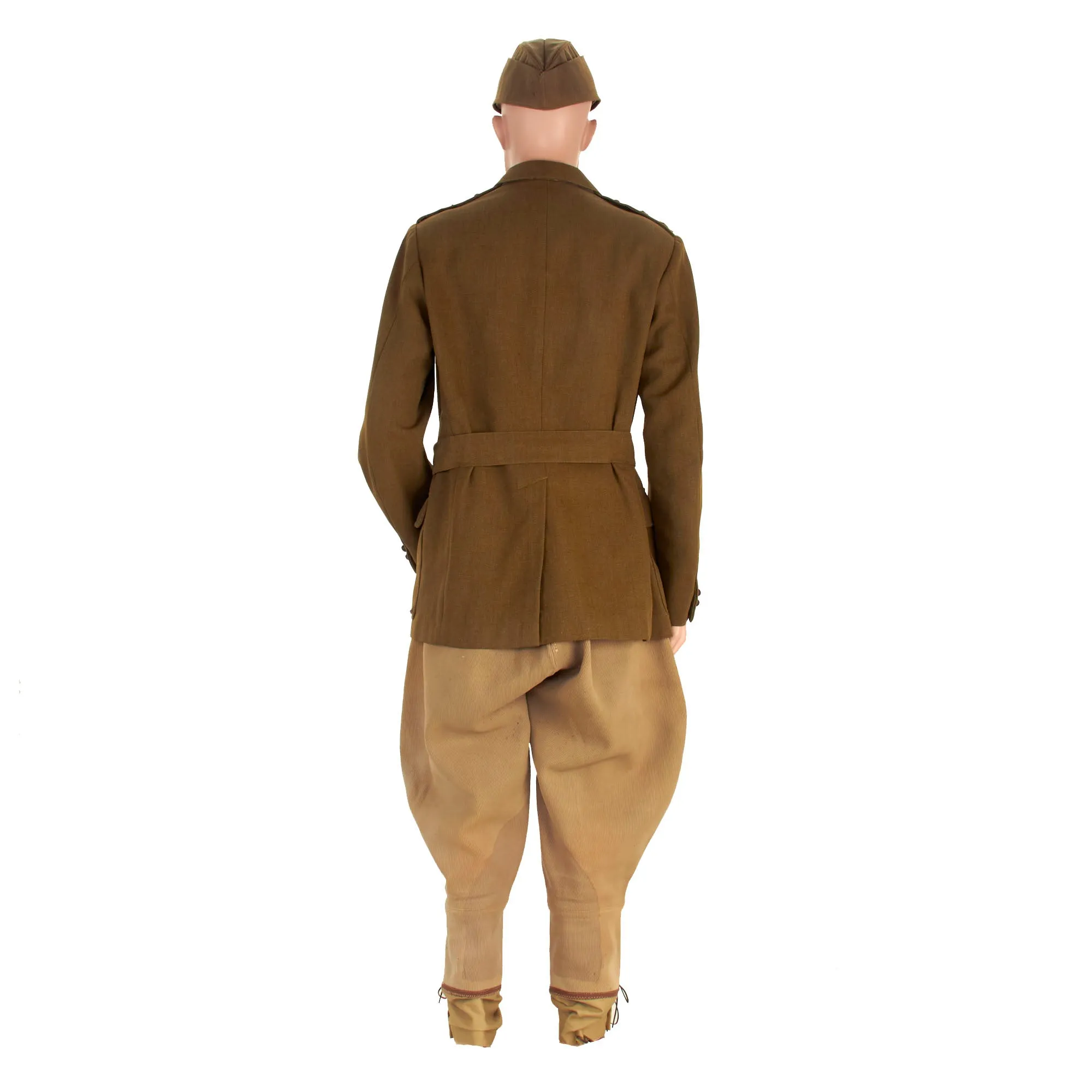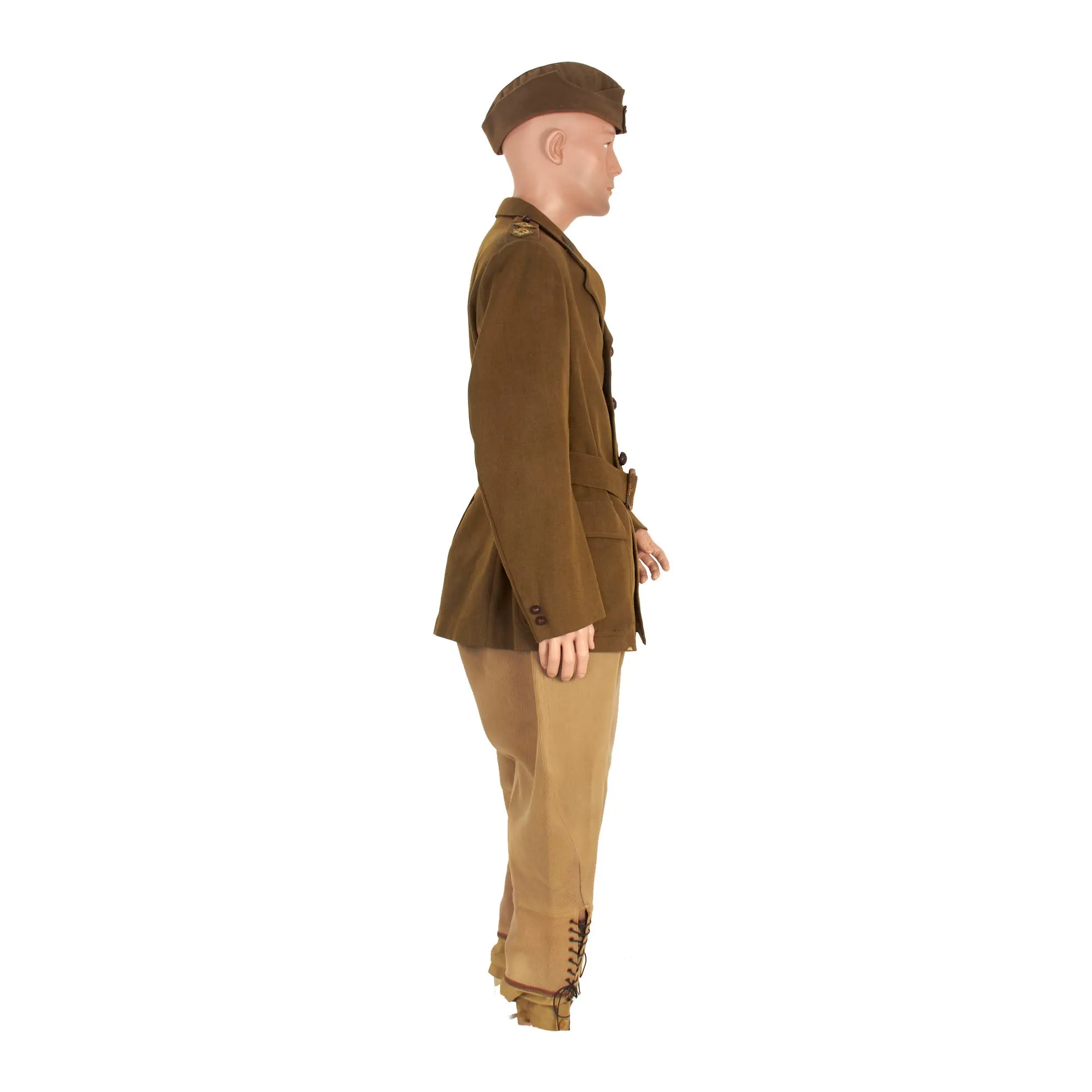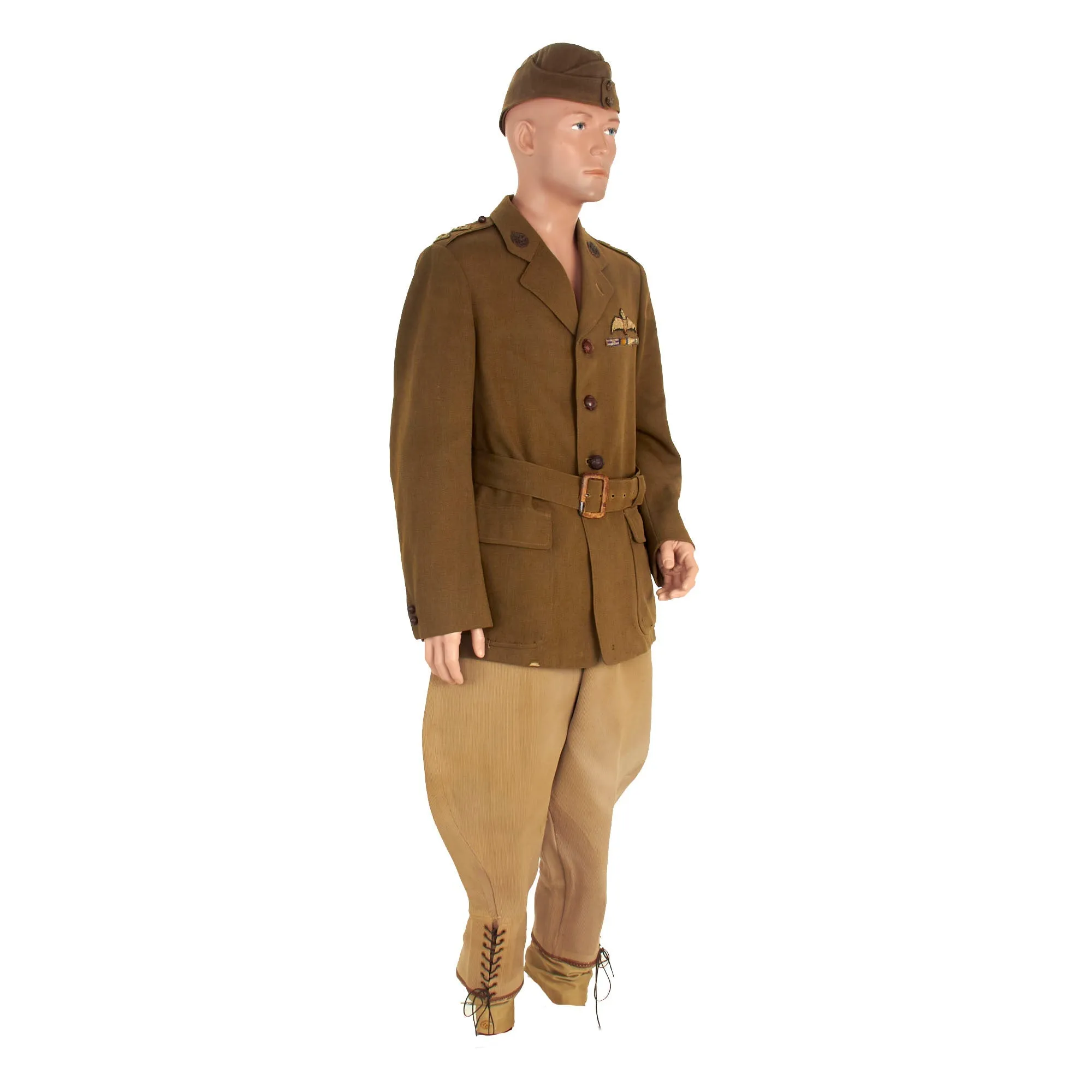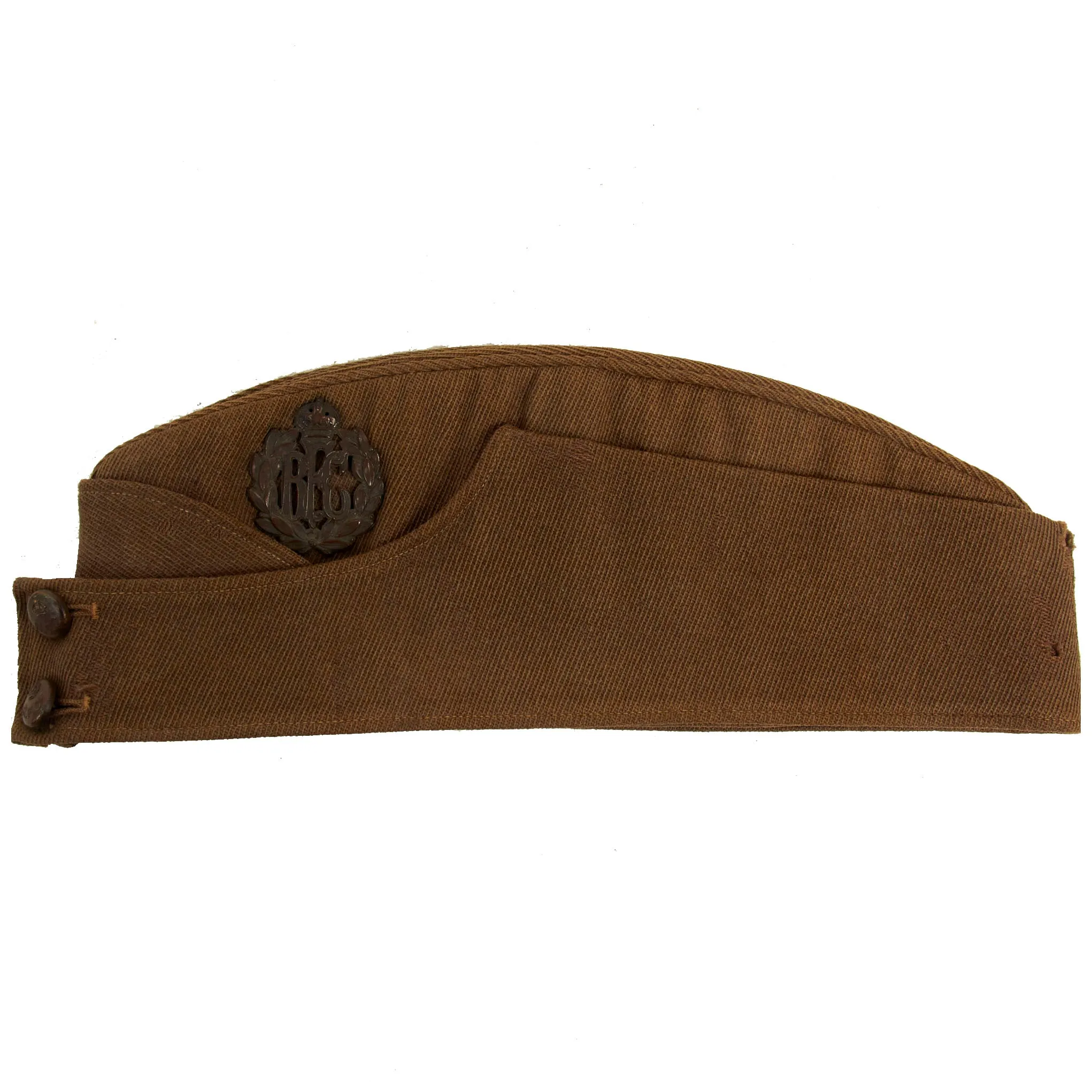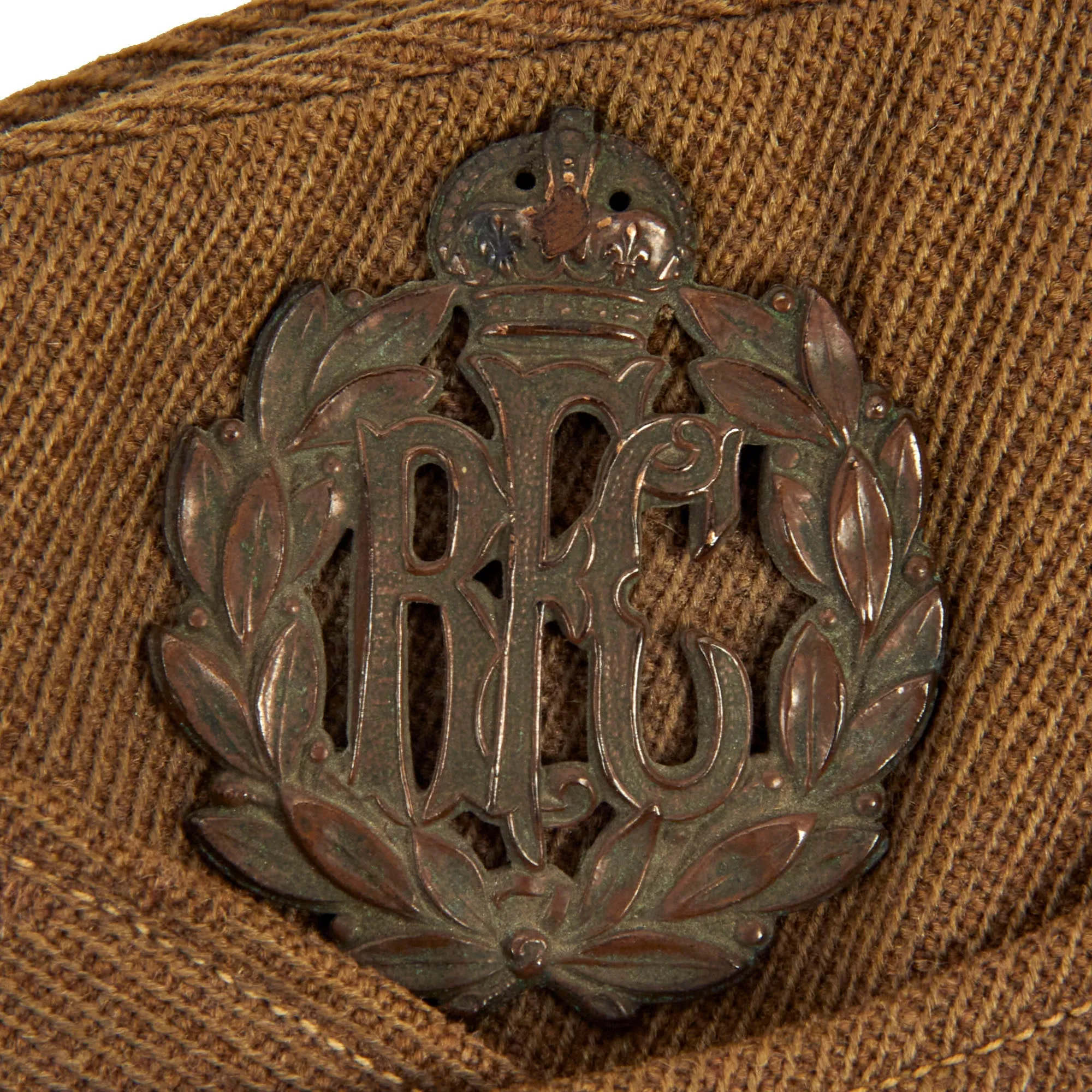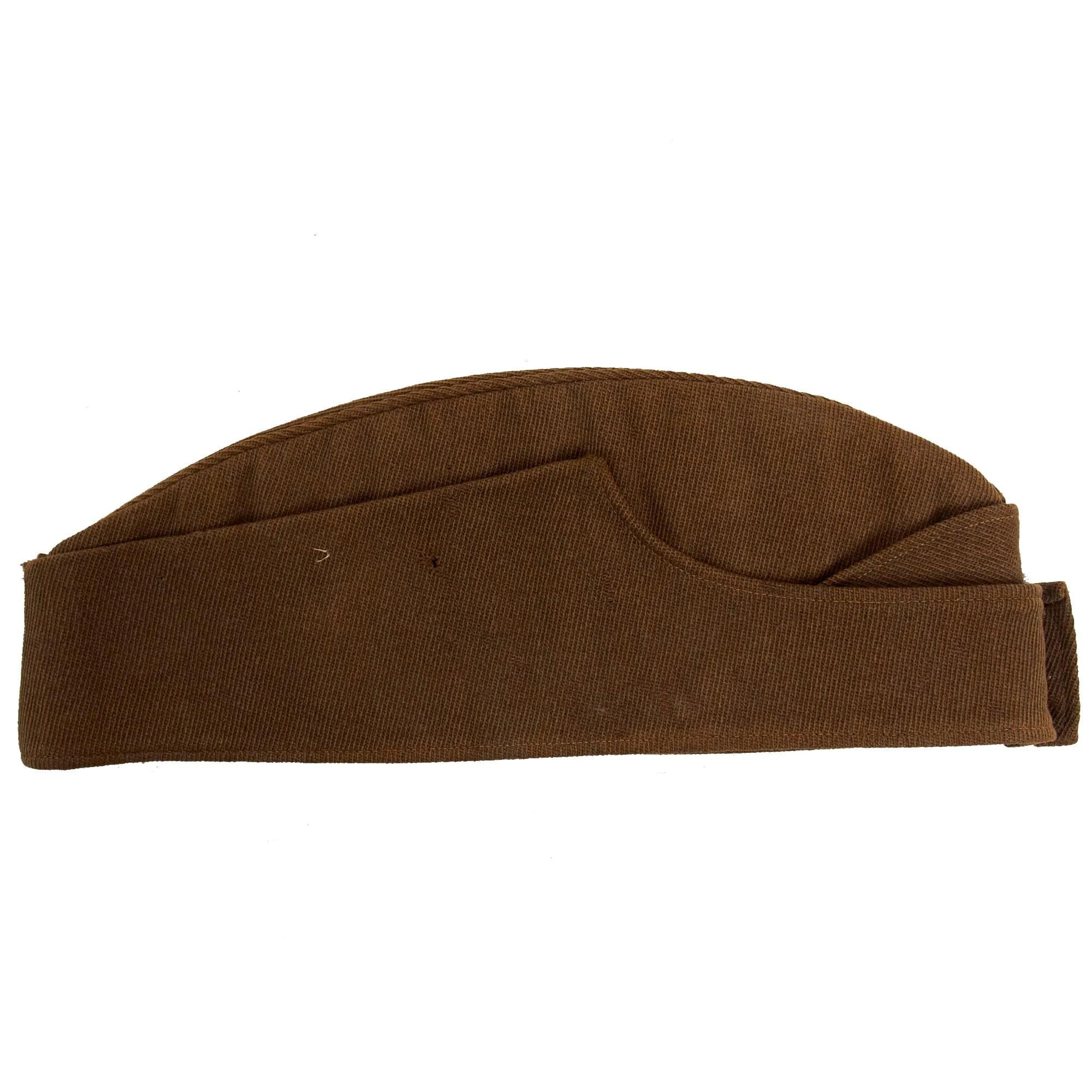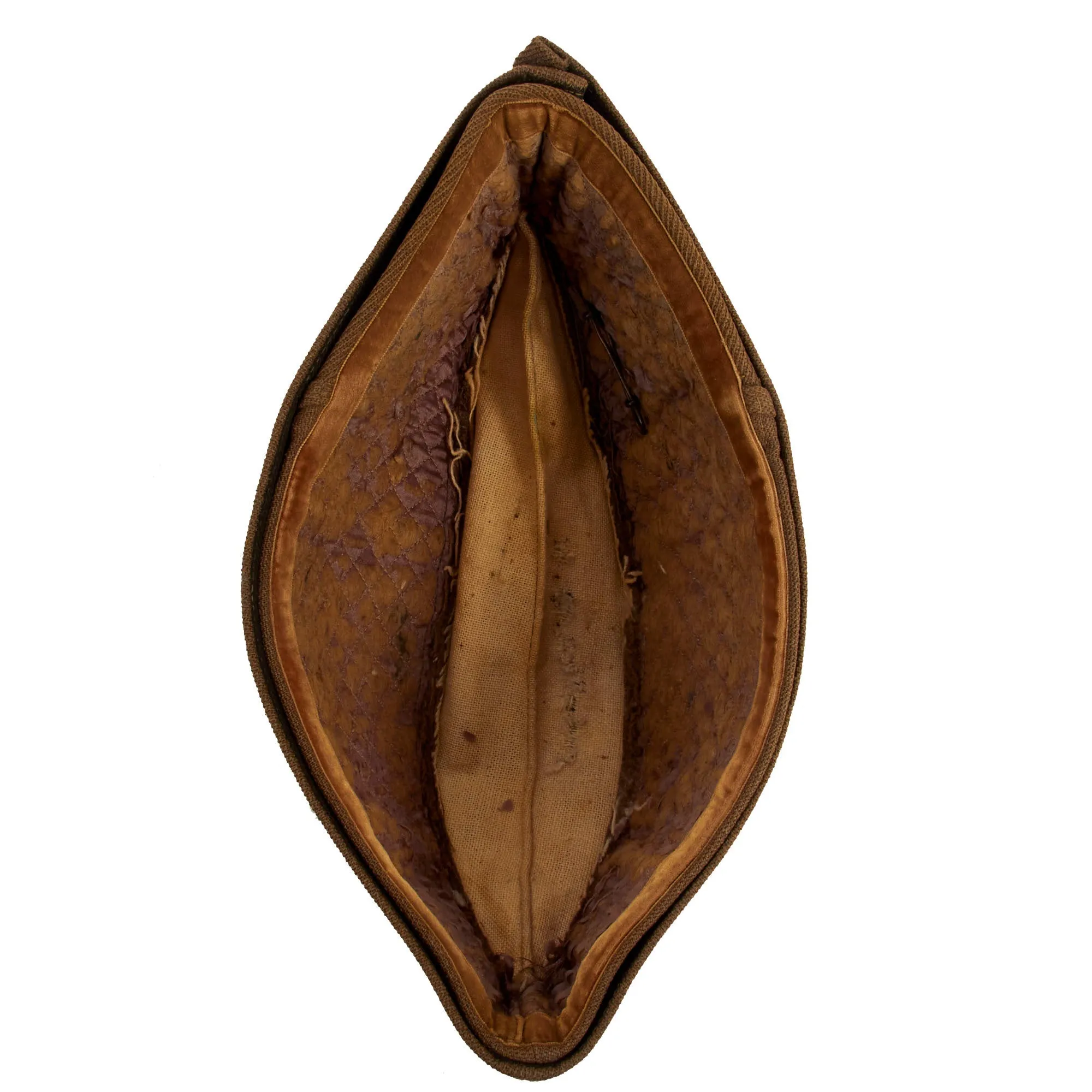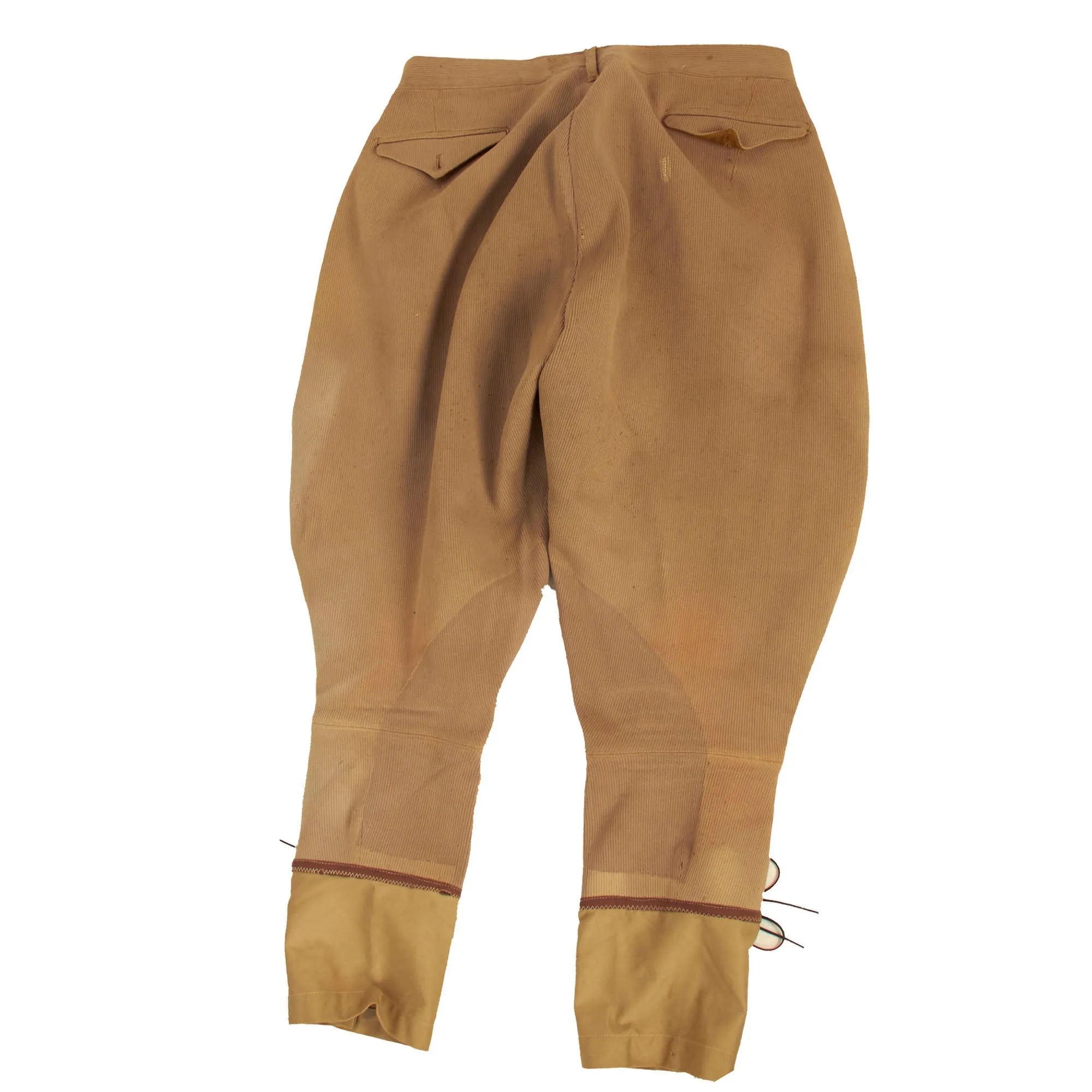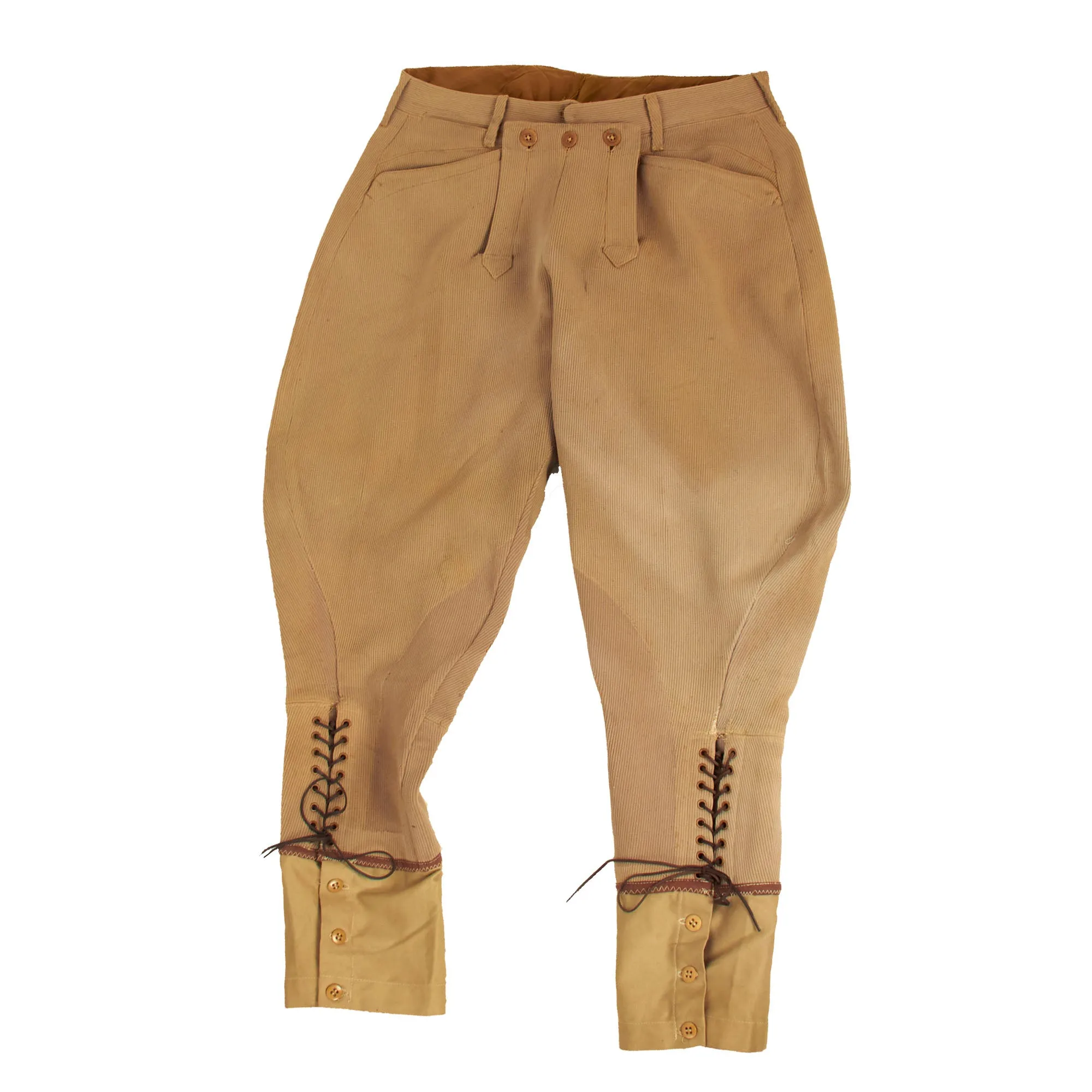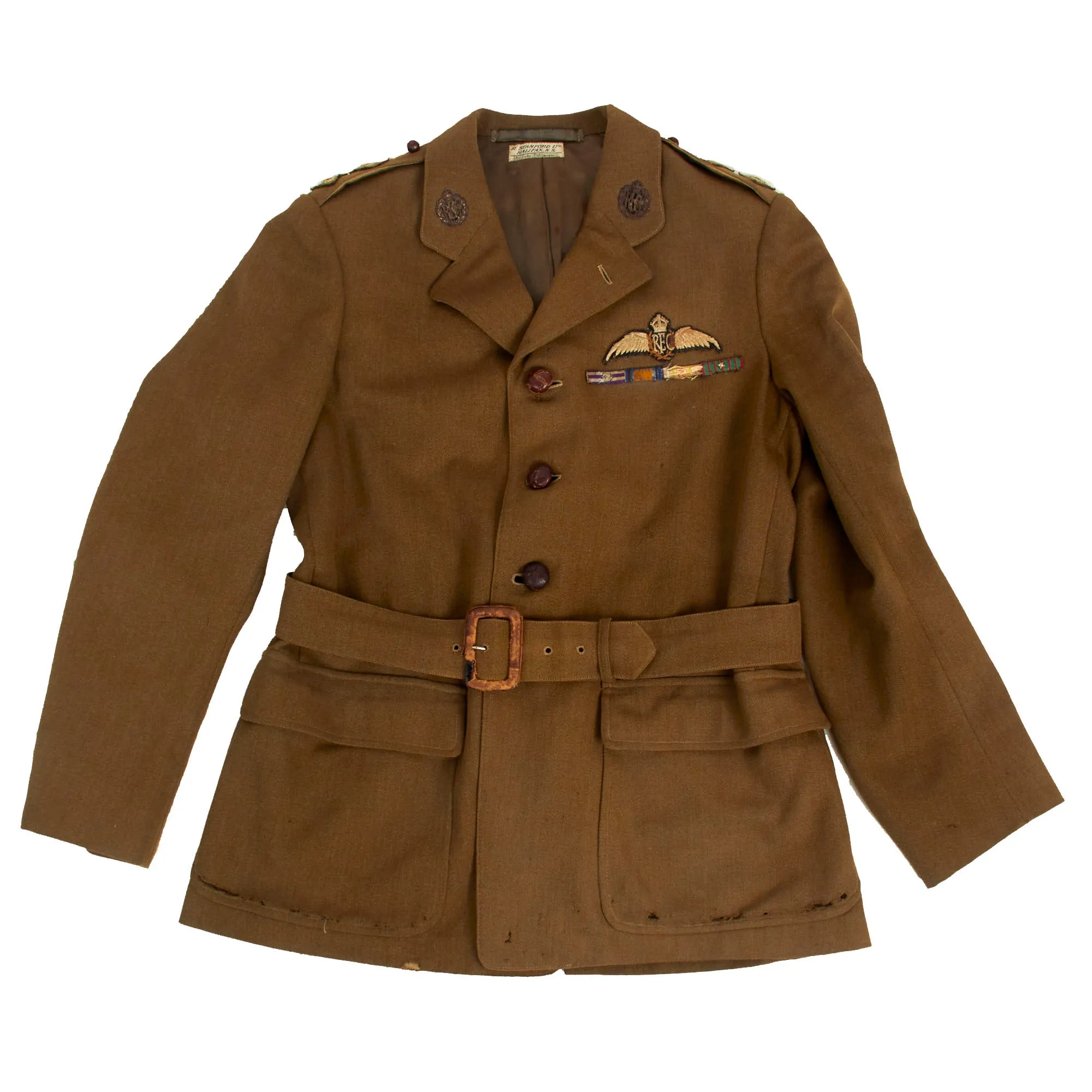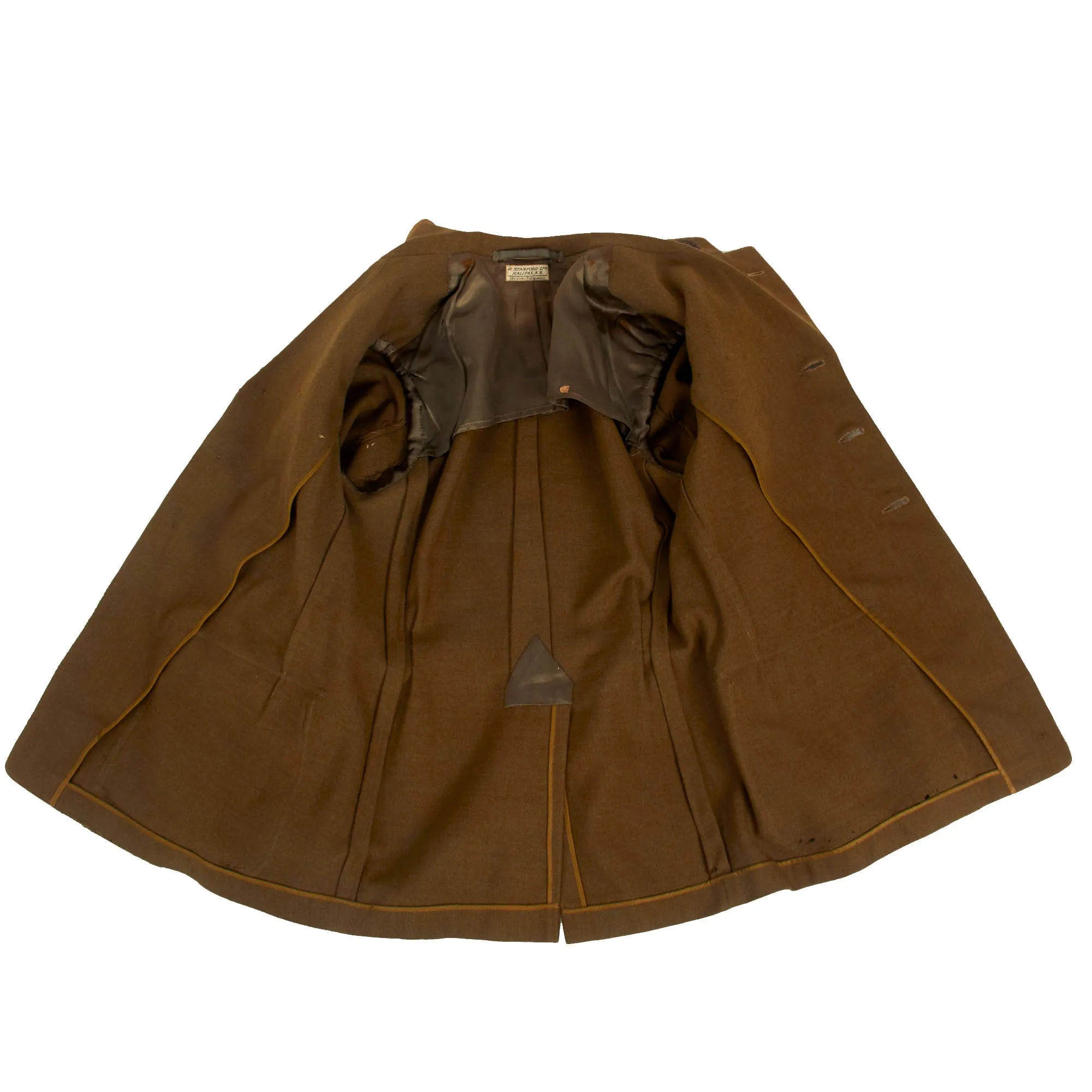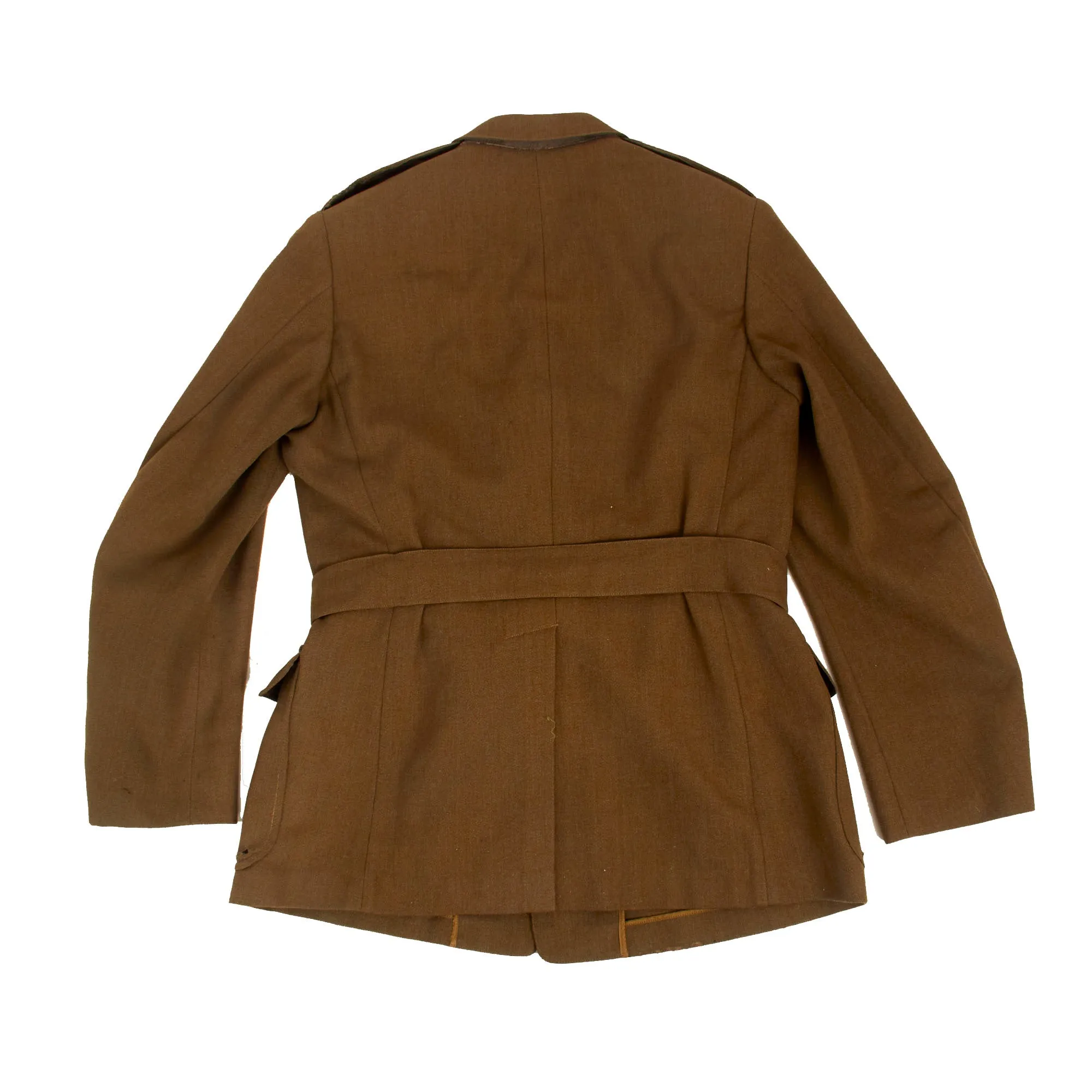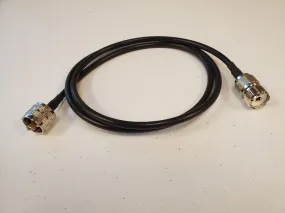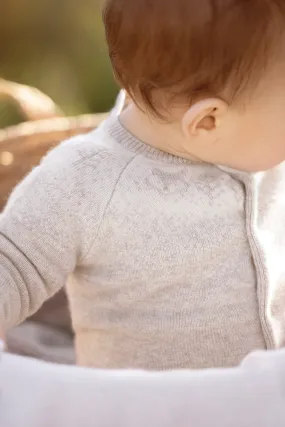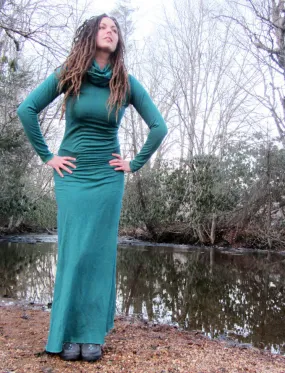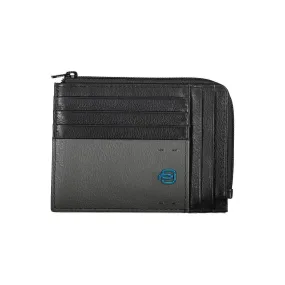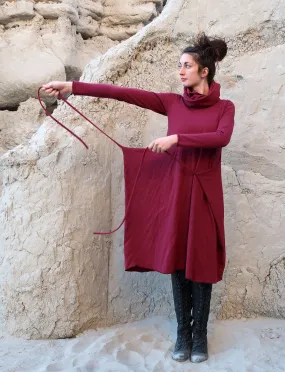Original Items: Only One Set Available. This is a lovely dress style WWI era British Officers uniform set for the Royal Flying Corps. The Royal Flying Corps (RFC) was the air arm of the British Army before and during the First World War until it merged with the Royal Naval Air Service on 1 April 1918 to form the Royal Air Force. During the early part of the war, the RFC supported the British Army by artillery co-operation and photographic reconnaissance. This work gradually led RFC pilots into aerial battles with German pilots and later in the war included the strafing of enemy infantry and emplacements, the bombing of German military airfields and later the strategic bombing of German industrial and transport facilities.
The uniform set consists of a jacket, breeches and overseas cap, all offered in wonderful condition. The coat is named to a LT C.A. FAL***** with the last part of his name unfortunately unable to be read. The coat was manufactured by R.STANFORD LTD / HALIFAX, N.S. meaning he could have been a Canadian pilot. The two rank pips on the shoulder straps indicate the rank of Lieutenant. All leather buttons are present and in good condition. The RFC collar devices are tarnished but still present. The left breast features a beautiful set of embroidered RFC wings just above a ribbon bar. The ribbon bar has not been retained very well, with a lot of material loss present.
The included trousers and overseas cap are in similar, wonderful condition. They appear to retain all original components and we were not able to find any names on them.
The picture that was paired with the uniform set is of the 34th Squadron RFC in 1918. The picture measures approximately 14” x 11” and is in wonderful condition. No. 34 Squadron RAF was a squadron of the Royal Air Force. During the First World War it operated as a reconnaissance and bomber squadron and in the 1930s operated light bombers. It was re-equipped with fighter-bombers in the later half of the Second World War and in the post-war period was reformed four times; first as a photo-reconnaissance unit, then anti-aircraft co-operation, then as a jet fighter squadron through the 1950s. It was last active in the 1960s, as a Blackburn Beverley transport squadron.
A lovely set of items that come more than ready for further research and display.
Approximate Measurements
Collar to shoulder: 9"
Shoulder to sleeve: 24.5”
Shoulder to shoulder: 14”
Chest width: 18"
Waist width: 17.5"
Hip width: 20”
Front length: 31"
Pants:
Waist: 15"
Inseam: 26"
At the start of World War I the RFC, commanded by Brigadier-General Sir David Henderson, consisted of five squadrons – one observation balloon squadron (RFC No 1 Squadron) and four airplane squadrons. These were first used for aerial spotting on 13 September 1914 but only became efficient when they perfected the use of wireless communication at Aubers Ridge on 9 May 1915. Aerial photography was attempted during 1914, but again only became effective the next year. By 1918, photographic images could be taken from 15,000 feet and were interpreted by over 3,000 personnel. Parachutes were not available to pilots of heavier-than-air craft in the RFC – nor were they used by the RAF during the First World War – although the Calthrop Guardian Angel parachute (1916 model) was officially adopted just as the war ended. By this time parachutes had been used by balloonists for three years.
On 17 August 1917, South African General Jan Smuts presented a report to the War Council on the future of air power. Because of its potential for the 'devastation of enemy lands and the destruction of industrial and populous centers on a vast scale', he recommended a new air service be formed that would be on a level with the Army and Royal Navy. The formation of the new service would also make the under-used men and machines of the Royal Naval Air Service (RNAS) available for action on the Western Front and end the inter-service rivalries that at times had adversely affected aircraft procurement. On 1 April 1918, the RFC and the RNAS were amalgamated to form a new service, the Royal Air Force (RAF), under the control of the new Air Ministry. After starting in 1914 with some 2,073 personnel, by the start of 1919 the RAF had 4,000 combat aircraft and 114,000 personnel in some 150 squadrons.

